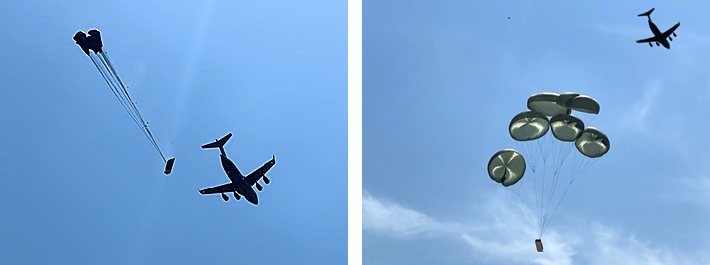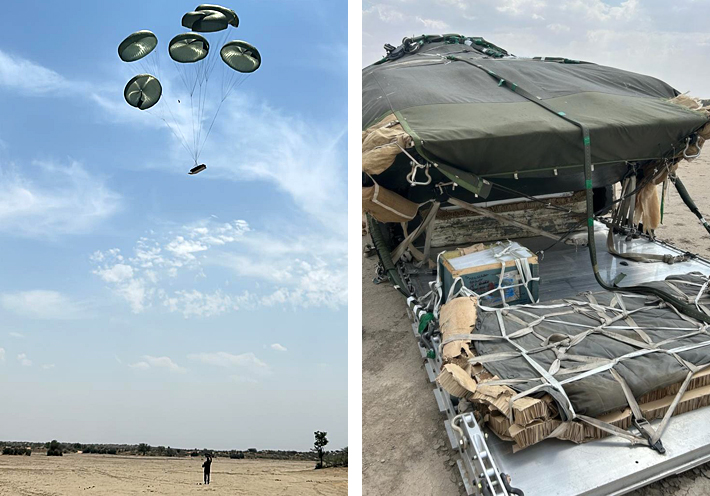INDIAN ARMED FORCES CHIEFS ON OUR RELENTLESS AND FOCUSED PUBLISHING EFFORTS

The insightful articles, inspiring narrations and analytical perspectives presented by the Editorial Team, establish an alluring connect with the reader. My compliments and best wishes to SP Guide Publications.

"Over the past 60 years, the growth of SP Guide Publications has mirrored the rising stature of Indian Navy. Its well-researched and informative magazines on Defence and Aerospace sector have served to shape an educated opinion of our military personnel, policy makers and the public alike. I wish SP's Publication team continued success, fair winds and following seas in all future endeavour!"

Since, its inception in 1964, SP Guide Publications has consistently demonstrated commitment to high-quality journalism in the aerospace and defence sectors, earning a well-deserved reputation as Asia's largest media house in this domain. I wish SP Guide Publications continued success in its pursuit of excellence.
BMP Drop from C-17 Aircraft
The successful airdrop of a BMP from a C-17 transport aircraft using a Type V Heavy Drop System was conducted near the Pakistan border on April 25, 2024
 |
The Author is Former Director General of Information Systems and A Special Forces Veteran, Indian Army |

On April 25, 2024, the Agra-based Army Airborne Training School (AATS) carried out a successful airdrop of a BMP from a C-17 transport aircraft using a Type V Heavy Drop System. The drop was conducted at the Mahajan Field Firing Range (MFFR) in Rajasthan, close to the Pakistan border.
Heavy Drop (P-7) Systems for IL-76 Aircraft were first imported by the Indian Air Force in the 1980s. That was a period when the issue of the Army having an Airborne Parachute Division was also under discussion and large number of the Russian AN-32 transport aircraft were being inducted into the Indian Air Force (IAF), in addition to IL-76 transport aircraft.
Over the years, heavy drop systems have been used in formation level airborne exercises in India to Para drop BMPs, vehicles, artillery guns and other military stores. Such heavy drops, as part of airborne exercises, have been conducted in the plains and deserts, as high altitude areas of Ladakh. BMPs have been airdropped from IL-78 aircraft for the past two decades and the first high altitude of the BMP was undertaken in Ladakh way back in 1994.
The Aerial Delivery Research and Development Establishment (ADRDE) of the DRDO has developed the indigenous P-7 Heavy Drop System, used for paradrop of military stores (vehicle/ammunition/equipment) of 7 Tonne weight class.
In time, the Russian heavy drop systems have been indigenised by the Defence Research and Development Organisation (DRDO). The Aerial Delivery Research and Development Establishment (ADRDE) of the DRDO has developed the indigenous P-7 Heavy Drop System, used for paradrop of military stores (vehicle/ ammunition/ equipment) of 7 Tonne weight class. Heavy Drop System (P-7 HDS) for IL-76 Aircraft consists of a platform & specialised parachute system. (Parachute System is a multi-stage parachute system comprising five main canopies, five brake chutes, two auxiliary chutes, one extractor parachute and platform is a metallic structure made up of aluminum/steel alloys. The system has been developed successfully with 100 percent indigenous resources. The P-7 HDS has been inducted into the Indian Army.
The Type V Heavy Drop System can be used for C-17, C-130 and other C-series aircraft. It has a 32-feet platform and a special multistage parachute system. It consists of eight main canopies, three extractor parachutes, one drogue parachute and electrical, electronic, mechanical systems and other latching accessories.

The airdrop of a BMP by the AATS at the MFFR on April 25, 2024, was unique in aerial delivery in the sense that this was the very first time that a Russian BMP was airdropped from an American C-17 transport aircraft using a tailor-made indigenous Type V Platform. With the help of the Type V Heavy Drop System, arms/equipment/ammunition weighing up to 20 tonnes can be easily transported and dropped with the help of parachute in the battlefield or at inaccessible places including in high altitude areas.
It may be asked whether a C-17 flying high and straight can survive in today's air defence (AD) environment long enough to drop a BMP? There is no doubt that creation of an "air corridor" is essential for these types of airborne operations. At the same time, airborne forces can continue to play the pivotal role that airborne forces could play in key missions in the future; particularly against hybrid threats and in anti-access environments. Besides, Indian airborne forces could also be deployed in out of area contingencies, where the AD environment may not be intense, making it easier to ensure a safe air corridor. It is because of such reasons that nations around the world continue to maintain airborne forces, not only as 'threat in being' but also for rapid deployment to exploit opportunities. Airborne Forces will continue to play a vital role in power projection as well.
The Type V Heavy Drop System, designed for C-17, C-130, and other C-series aircraft, enables the transportation and dropping of arms/equipment/ammunition weighing up to 20 tonnes
At the same time, the exposure of airborne forces while in the air is also being addressed by armies. Advances in vertical takeoff and landing (VTOL) technologies (tilt-rotor aircraft and helicopters) have brought increased flexibility and air assault is largely the preferred method of insertion. However, airborne insertion continues to be maintained as the rapid response capability to get troops on ground anywhere, including in inaccessible areas.
Getting the airborne force together after the airdrop has become easier with the use of low-level dropping parachutes, steerable parachutes, as well as combat free-fall or skydiving parachutes. It is possible to airdrop logistics at the required place using homing beacons, as well as by deploying drones. Reduced exposure during heavy drop operations was tried out in the US in the past using low-level heavy dropping systems.
The low-altitude parachute-extraction system (LAPES), first developed in the US, is a tactical military airlift delivery method where a fixed wing cargo aircraft can deposit equipment or supplies in situations in which landing is not an option, because the area is too small to accurately drop equipment or supplies from high altitude.
Advances in vertical takeoff and landing (VTOL) technologies have increased the flexibility of airborne operations, but traditional airborne insertion methods, such as heavy drops and low-altitude parachute-extraction systems (LAPES), continue to be maintained for rapid troop deployment and logistics delivery.
The mechanism involves loading cargo on a pallet rigged with two types of parachutes. The drogue chute pulls the cluster of larger extraction chutes out. The deployed extraction chutes then pull the load out of the plane. Floor locks hold the pallet in place until extraction time. The procedure by slowing the aircraft with landing gear lowered, lowering the ramp and opening the cargo door. On command of the pilot, the drogue chute is released and allowed to trail behind the aircraft. Flying at a wheel height of 1-2 meters above ground, the drogue chute is allowed to pull the extraction chutes out into the airstream. The force of these chutes overcomes the floor locks, pulling the pallet across the ramp, out of the aircraft, and onto the extraction zone.
LAPES enables speedy delivery of large cargo instead of the aircraft landing and taking off, which exposes it to enemy fire. However, the drop sequence's low altitude allows for no margin of pilot error and the risk of the aircraft crashing is high. The system is not in use in the US anymore after one C-130 crashed performing a LAPES demo at the Sicily Drop Zone at Fort Bragg on July 1, 1987, killing three on board and one on ground, plus injuring two crew members because the load failed to clear the aircraft.





